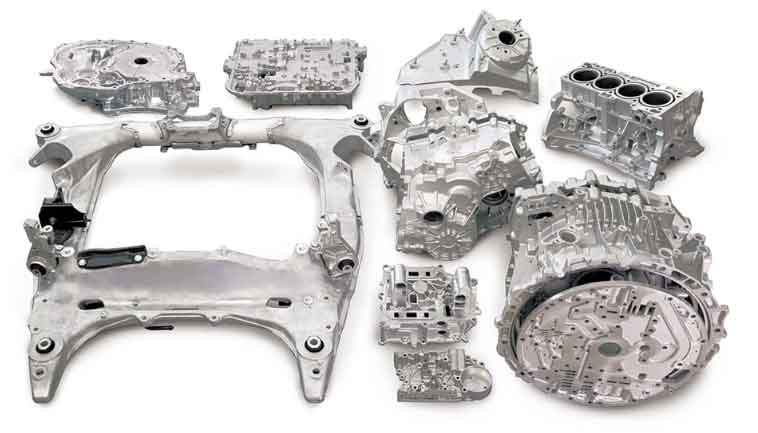Die casting is a highly efficient manufacturing process that allows for the streamlined production of complex metal components. Here are the key steps involved in the die casting process, from concept to production:

- Design and Tooling: The process begins with the design of the component and the creation of the die or mold. The die is typically made of steel and consists of two halves, the cavity and the core, which define the shape of the final component. The design considerations include part geometry, draft angles, gating and venting systems, and any necessary features for ejecting the part from the die.
- Material Selection: The appropriate metal or alloy is selected based on the desired properties and requirements of the component. Commonly used materials in die casting include aluminum, zinc, and magnesium alloys, each offering specific characteristics such as strength, weight, corrosion resistance, and thermal conductivity.
- Preparation: The die is prepared by cleaning, lubricating, and preheating it to ensure proper casting and prevent sticking of the molten metal. The die is then closed and clamped securely in the die casting machine.
- Injection: The molten metal is injected into the die cavity under high pressure. The metal is typically melted in a furnace and then transported to the machine using a ladle or a dedicated metal delivery system. The high pressure helps fill the entire cavity and ensures that the metal reaches all the intricate details of the die.
- Solidification and Cooling: After injection, the molten metal rapidly cools and solidifies within the die. Cooling channels within the die help control the cooling process, ensuring the proper solidification of the metal. The cooling time is carefully monitored to prevent defects and achieve the desired mechanical properties.
- Ejection and Finishing: Once the metal has solidified, the die is opened, and the part is ejected using ejector pins or other mechanisms. Any excess material, known as flash, is trimmed off, and the part may undergo additional finishing processes such as machining, polishing, or surface treatments to meet the required specifications.
- Inspection and Quality Control: The cast parts undergo thorough inspection to ensure dimensional accuracy, surface finish, and overall quality. Various inspection techniques, including visual inspection, measurement, and non-destructive testing, may be employed to verify the integrity of the parts.
- Post-Casting Operations: Depending on the specific requirements of the component, additional operations such as heat treatment, surface coating, or assembly may be performed after casting to enhance its performance or functionality.
The die casting process offers several advantages for streamlining production, including high production rates, excellent dimensional accuracy, repeatability, and minimal post-casting processing. It is well-suited for high-volume manufacturing, providing cost-effective solutions for a wide range of industries, including automotive, aerospace, electronics, and consumer goods. The process’s efficiency and precision make it a popular choice for converting concepts into production-ready components.
